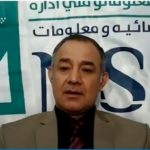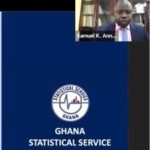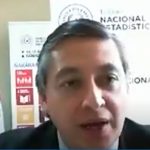Updates concerning the national census were a common theme reported by speakers. Statisticians discussed the relevance of indicators to their national MPIs and how they navigated data gaps using existing census data and updating surveys to design MPIs reflecting context-relevant deprivations. In the Philippines, Dennis Mapa, Undersecretary of the National Statistician and Civil-Registrar General, Philippine Statistics Authority shared how the MPI is part of the ‘Community-based Monitoring Survey’ (CMBS), and how indicators like “mobility, access to the internet overcrowding and underemployed and discouraged workers are now being considered in the Philippines MPI.” In Uruguay, Diego Aboal, Technical Director of the National Institute of Statistics shared that a new census in 2023 will allow for poverty mapping, and “disaggregation of the index along some geographical dimensions”. Other speakers ranging from Mexico and Colombia to Ghana and Malawi also use or plan to use census-based MPIs.
The assembled statisticians highlighted how increasing the frequency of data collection and using various surveys could improve multidimensional poverty identification. For instance, in Ghana, Samuel Kobina Annim of the Ghana Statistical Service explained that from 2022 to 2024, the Ghana Living Standards survey will be rolled out to generate quarterly MPIs. Similarly, Graciela Márquez Colin, President, National Institute of Statistics, Geography and Informatics described how Mexico will run two household surveys in 2022, including a quarterly survey revealing seasonal variation. Juan Daniel Oviedo, Director, National Administrative Department of Statistics (DANE), provided details of Colombia’s experience of integrating the MPI with census information and public administrative records to address conceptual and granularity challenges such as monitoring children’s school attendance.
Countries planning new MPIs indicated their desire to use the MPI not just as a measure, but as a tool for policy. The Somalia National Bureau of Statistics became an autonomous entity in 2020 and has laid out a clear roadmap to use the MPI to monitor poverty. Sharmarke Farah, Director General, National Bureau of Statistics of Somalia, shared their intent to report their official MPI for SDG 1 Indicator 1.2.2, to include the MPI in the Voluntary National Review, and use the MPI to support the process with its Heavily Indebted Poor Countries (HIPC) Initiative.
The impact of Covid-19 has left people at greater risk of falling into multidimensional poverty. The MPI continues to be used to identify those vulnerable to the impact of Covid-19. Samuel Kobina Annim, explained how in Ghana, the Alkire-Foster method is being used to construct a vulnerability index and goes beyond traditional sources of data like surveys and censuses. Jawad Al-Saleh, Assistant of President of PCBS for Development of Statistical Work at the Palestine Central Bureau of Statistics, shared how PCBS aimed to capture the impact of Covid-19 using a simulation approach in the State of Palestine. Sofia Mora Steiner of the National Institute of Statistics and Census, reported Costa Rica had experienced major setbacks in education and increasing deprivation in labour between 2020 and 2021, reflecting school closures and job loss resulting from the pandemic.
Gonzalo Hernandez of the MPPN, closed the session stating “statistics is about listening and understanding people. Let’s make visible those who are not always visible. In this respect, the MPI is a very useful tool to do this with the help of good statistics” and concluded the session, encouraging all to register for OPHI Executive Education programme.
Some additional quotes from the speakers are included below:
Juan Daniel Oviedo, Director, National Administrative Department of Statistics (DANE), Colombia
“You’ll see from the statistical perspective, from the survey of schools official and non-official, public or private, that we’re providing professional services, several alternatives in order to have flexible ways of learning…offered to the students. But…in the case of virtual platforms, we [needed] to verify that the children that were answering the survey had computer access or internet access… That’s why due to a very thorough analysis of contrasting information of the living standard survey, the educational survey or educational census, and the involvement of the administrative records of the Ministry of Education, [we] manage[d] together the strategies that the school was offering in order to provide flexibility of school attendance…We installed capacity, or access to the internet or to a computer, or to a smartphone in order to have access to internet in order to be connected to…the educational system. And that’s why we are very proud to share this experience because this implies that the multidimensional poverty measures should be integrated with census information and some other administrative records in order to face not only regularity challenges, but also some conceptual challenges we face during the pandemic.”
Samuel Kobina Annim, Government Statistician, Ghana Statistical Service:
“…How we’ve started that is incorporate questionnaires within recently ended data collection… to reflect the indicators that we need for the computation of [the] Multidimensional Poverty Index. Actually, we did go ahead to include health indicators, specifically health insurance to complement education and living conditions variables that we use in the computation of multidimensional poverty index in our previous and release.”
“Going forward, how are we going to do this, as I said, we’re tackling poverty from a broad perspective. So it’s not just the multidimensional poverty index. From the census, we’re going to use more area estimation, to do poverty estimates, poverty mapping across our different districts and obviously, do ranking of the poverty mapping in the country. We’re also going to have a thematic and analytical report, they will give us a sense of the correlates of multidimensional poverty index. And also the analytical report will give us a sense of how this relates with other socioeconomic variables.”
“We’re going to have quarterly, multidimensional poverty index and also a vulnerability index, our quest to tackle poverty broadly.”
Sofia Mora Steiner, Design, product and analysis coordinator of the National Census, National Institute of Statistics and Census, Costa Rica:
“In these almost seven years the MPI has shown how Costa Rica’s public policy has an impact on the improvement of people’s quality of life and therefore, … the incidence of MPI has shown a decrease during this time. But also, as you can see, a certain stagnation has been identified in the last three years, which is framed in the context of the national and international crisis of Covid-19.
“The MPI has allowed…decision makers identify the areas that improved over time as in the case of the housing dimension …and especially in this dimension the indicator on the use of internet which reflects the improvement to access to technology…[The MPI] allowed us to identify areas that require further attention, such as the labour dimension, which every year includes more and more households…and especially the dimension of the education that between 2020 and 2021 had a very significant setback.”
“The implementation of the MPI in Costa Rica has also generated initiatives to the company’s business MPI which is of great importance to the private sector such as the corporate MPI which has been promoted by the organisation Horizonte Positivo and that allows companies to identify among their employees those residing in the households in multidimensional poverty. In this way, generate programs to support them to get out of that condition. ”
Graciela Márquez Colin, President, National Institute of Statistics, Geography and Informatics, Mexico:
“…we’re running two household surveys this year…the traditional one, the one we have been running for many many years, and now we have this innovation of quarterly survey. We can observe seasonal variations. And we suspect that this innovation, these two surveys would provide completely new information that we didn’t have in the biannual data.”
“From a statistical point of view, quality and effective access is a challenge we need to face by constant revision and updating methodologies, but also by using technological innovation for a statistical production.”
“MPI disaggregation includes supranational, national level, sex, age, disability, education attainment, and indigenous languages. So, this is the regular disaggregation that we [get] every two years. The MPI series runs from 2008 to 2020…but also geographic disaggregation is also available at municipal level for 2010, 2015 and 2020, which are the population census states. So, we have at the geographical level we have this state disaggregation every two years, and municipal disaggregation every five years.”
Sanyukta Samaddar, Adviser (SDGs), Niti Aayog, India:
“So we were able to compute the power, the MPI scores, and the contribution of all the factors for as many as 640 districts of the country, which is what the power of this tool is, the kind of disaggregation. These aggregated insights that it throws across all the districts of the country. And this is what we try to impress upon. We are trying to use it as a policy to trigger the policy action at the level of that district administration as to where should your funds go? Where should the focus of action go? Where should the targeted intervention go.”
“MPI estimation of poverty, estimation of incidence of poverty, intensity of poverty, amazing that helps us to understand where is it that the most vulnerable sections of the people lie. Where are they placed, which are the districts which are the regions and more so what is that exact factor? Where is it: nutrition? Is it maternal health, is it cooking fuel, which is leading to this kind of numbers, and that is where we move beyond the mere estimation of poverty. This is what we intend and we are doing in a very fast-tracked manner in terms of not merely the estimation but using the insights that are coming out of these numbers. These numbers which reflect what is the level of poverty, what is the factor of poverty into developing very state-specific reform action plans, which our action plans targeting that actual reason, the contributing factor, and this we are doing not only at the national level.”
Lizzie Chikoti, Chief Statistician, National Statistical Office, Malawi:
“First in Malawi, the Multidimensional Poverty Index report was officially launched online in December 2021. And this report was produced with support from UNDP and the OPHI team and it used a dataset from the fourth integrated household survey. I showed the code HS four and this survey was conducted in 2016 to 2017 importantly, to mention that this survey is also used to compute the official monetary report, but the figures in Malawi so this allows the report to showcase the complementary nature of both approaches to poverty. So, we have the multidimensional poverty and then we have the monetary poverty, the source is the same: the integrated household survey.”
“I’d like to stress that some of the questions and allowing [in the] Malawi Multidimensional Poverty Index, [are] indeed ordinary, [and] already included in census questionnaires with very few exceptions. In Malawi, NSO has plans to include extra variables into census data, and potentially explore the possibility of having a reduced version of the Malawi MPI computed with this information. We are well aware that the variables which are used to come up with the nutrition indicator, that is wasting stunting and underweight, require some additional measurements and intensive training of enumerators, so this cannot be done during census training. They also require some tools for instance, skills and headboards, which cannot be procured for assessors’ activity. This is the reason why our aim is to have a partial, but still powerful and informative version of our MPI based on census data in the future.”
“Finally, allow me to announce that NSO is planning to start analysis of the second Malawi Multidimensional Poverty Index report in March this year to update the indicators using data sets from the fifth integrated household survey, which was conducted in 2019 to 2020. This will allow NSO to perform analysis of changes over time in terms of multidimensional poverty in Malawi, to inform policies that are effective and useful, [and] help lift people out of poverty in our country for good.”
Diana Dilshanie Deepawansa, Deputy Director, Department of Census and Statistics Sri Lanka:
“The incidence of poverty in Sri Lanka has declined from 2002 to 2016 from 22.7% to 4.1%. Despite the sharp decline at the national level poverty pockets are still in existence across districts.”
“Consequently, the pandemic has exposed the multidimensionality of poverty. Going beyond a simple misuse of monetary values, [it] is the time for the country to understand the new vulnerabilities faced by households, particularly households headed by women and differently abled persons household in areas with flawed digital literacy and accessibility and the children in the country. In this context, multidimensional poverty measures would be an invaluable tool to identify these special social groups who need other support to overcome the poverty and to be used in national development agendas.”
“Sri Lanka has published two multidimensional poverty indices as a multidimensional poverty index and child multidimensional poverty index for children, age zero to four. These two indices are useful to formulate policies to alleviate national poverty and so, further focuses to eradicate the child poverty in the country. The latest finding reported that the approximately 16% of the total population and 42.2% of children under the age of five are multidimensionally poor.”
Simon Harry, Statistician-General, National Bureau of Statistics, Nigeria:
“We see the Vice President driving the entire process for us to ensure that the result becomes a major tool of government planning and indeed resource allocation in [going] forward”
“We can see real commitment and desire on the part of policymakers to ensure that the opportunities [that] are presented that by the MPI [help policymakers] fully examine, to come up with policies and programmes that will help to transform the nation”
“I was listening with keen interest [the] presentation from other countries and I was able to identify where we’re doing well, and where we’re having some gaps, and I see with this kind of opportunity, we may have to go over to the drawing board team, with a view to see those areas where we are having some doubts so that we make amends as quick as possible.”
“…the lesson learned from our visit to Oxford even though personally I [did not have the] opportunity to be there, but then my colleagues came back and they share their experiences with us. With me that was very, very wonderful.”
Jawad Al-Saleh, Assistant of President of PCBS for Development of Statistical Work, Palestine Central Bureau of Statistics:
“…we managed to publish the first report about the national MPI in 2019… and discuss the result with the audience and the line ministers and the Commission.”
“…we have a commitment from the government in 2019 for this line to be used as a national poverty line for everything here in Palestine, either for granting…for any ministry or for everything. After that we started working on what was called a national strategy for multidimensional poverty alleviation.”
“Unfortunately, the pandemic happened… So what we [did was] a quick survey to capture the impact of the COVID on our lives….we agreed…to follow what is called the simulation approach, to see the impact on Covid on these indicators. And we are in the process of evaluating this issue using simulation, basically the market simulation, we have additional information about these indicators from them.”
“…we believe that those challenges of being more precise of how the pandemic affected education or health is something very important.”
Dennis Mapa, Undersecretary, National Statistician and Civil-Registrar General, Philippine Statistics Authority:
“For the country’s legal framework the law providing for a Magna Carta of the poor, or Republic app number 11291 states that the Multidimensional Poverty Index, which is to be determined by the Philippine statistics authority shall be considered in determining the poor.”
“Also in 2019, the community-based monitoring system or the CBMS app was approved, which will further cater to the data support to the Philippine MPI as well as for other SDG indicators at a more granular level. The CBMS is a census of households undertaken by local government units’ participation of the community using an accelerated poverty profiling system in the data collection, processing, mapping and analysis.
Pilot CBMS Bill operations were conducted in the fourth quarter of 2021. This was done in preparation for the nationwide roll out this year in 2022. The data collected from the pilot CBMS will be an integral part of testing the proposed MPI methodology.
In our continuous refinement of the MPI methodology, relevant indicators on deprivation highlighted by the pandemic are being proposed. Indicators on mobility, access to the internet overcrowding and underemployed and discouraged workers are now being considered in the Philippines MPI. The proposal and recommendation of the MPI methodology goes through on top of the process where in the technical committee on poverty statistics, that’s the methodology to ensure that it is sound and robust. All these efforts are aimed at providing evidence-based information that will aid in crafting sound and relevant policies and programmes that will help alleviate poverty in all dimensions and sectors.”
Diego Aboal, Technical Director, National Institute of Statistics, Uruguay:
“We plan to include conditions: housing conditions and basic services, health, childhood and youth conditions. This is very important for Uruguay. Most of the of the poverty measured by the income method is concentrated in childhood, so this is important to have this perspective and this is why we also have the support of UNICEF to have this approach as part of the MPI also education is very relevant for the country and unemployment.”
“The potential uses that the country envisions after we conclude this exercise is in first instance to use the MPI as a targeting tool for multidimensional poverty protection. This will be the main goal of the MPI but also [it will] be very relevant as an input for design and revision of the safety net that the country already has. So we can use these safety nets in the future to avoid people entering poverty.”
“…it will be very important for geographical targeting, as a tool for social programmes. So, for that the geographical dimension will be very relevant. And in this sense, the country is preparing for a new census in the year 2023. So, we want to include some of these variables in the census so we can have a disaggregation of the index along some geographical dimensions in the country.”
Sharmarke Farah, Director General, Somalia National Bureau of Statistics:
“Somalia has always had, you know since 1960 a Statistics Department, but the Somali National Bureau of Statistics was established as independent agency only in 2020. And we have used that opportunity [of] its autonomous status to integrate the importance and production of statistics in Somalia by setting ambitious targets including the launch of the national multidimensional poverty index.”
“We are also very pleased to be announcing that the multidimensional poverty index is part of the 2022 Voluntary National Review of our SDG, SDG 1, No Poverty. Somalia will also be reporting in the global SDG indicator database towards the indicator 1.2.2. This measure is expected to be aligned with the global MPI structure. Somalia’s National Development Plan, which is also compliant with the Poverty Reduction Strategy calls for the multidimensional approach to poverty reduction.”
“Somalia is also currently in the midst of HIPC initiative. We have already achieved the decision point in 2020 and are expected to reach the completion point in 2025. Although the multidimensional poverty index is not a condition, the launch of the MPI will contribute to achieving the completion point at that stage. We are currently working with our counterparts in including Ministry of Labour and Social Affairs to ensure that this measure is used to improve the policies and catalyse the poverty reduction needs.”
The eminent guest speakers of the event included:
- Juan Daniel Oviedo, Director, National Administrative Department of Statistics (DANE), Colombia
- Samuel Kobina Annim, Government Statistician, Ghana Statistical Service
- Sofia Mora Steiner, Design, product and analysis coordinator of the National Census, National Institute of Statistics and Census, Costa Rica
- Graciela Márquez Colin, President, National Institute of Statistics, Geography and Informatics, Mexico
- Sanyukta Samaddar, Adviser (SDGs), Niti Aayog, India
- Lizzie Chikoti, Chief Statistician, National Statistical Office, Malawi
- Diana Dilshanie Deepawansa, Deputy Director, Department of Census and Statistics, Sri Lanka
- Simon Harry, Statistician-General, National Bureau of Statistics, Nigeria
- Jawad Al-Saleh, Assistant of President of PCBS for Development of Statistical Work, Palestine Central Bureau of Statistics
- Dennis Mapa, Undersecretary, National Statistician and Civil-Registrar General, Philippine Statistics Authority
- Diego Aboal, Technical Director, National Institute of Statistics, Uruguay
- Sharmarke Farah, Director General, Somalia National Bureau of Statistics




























Recent Comments